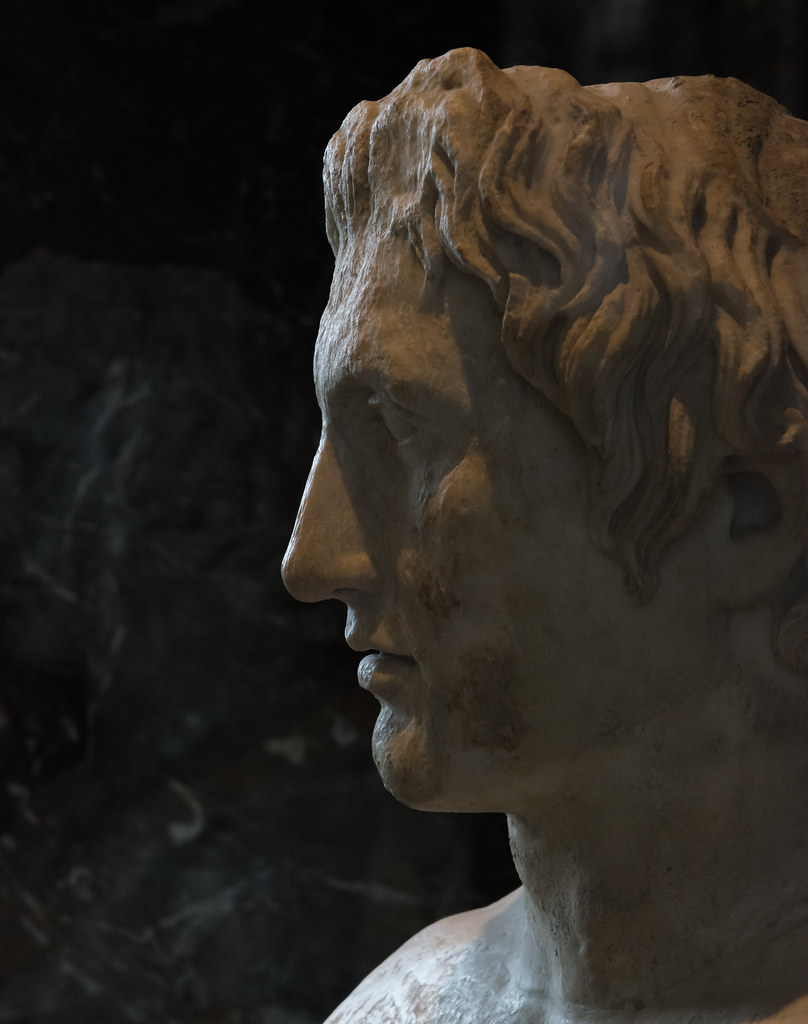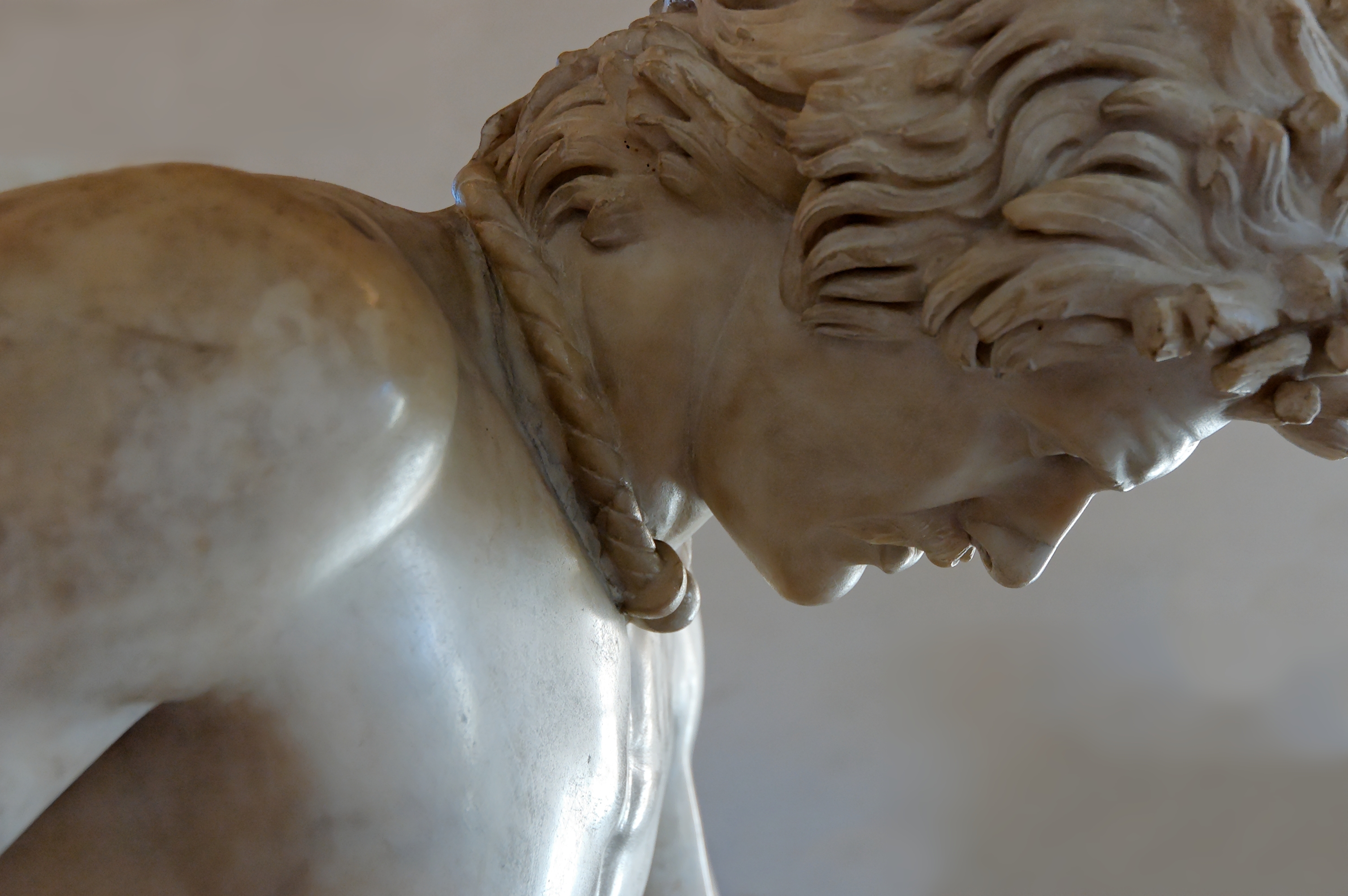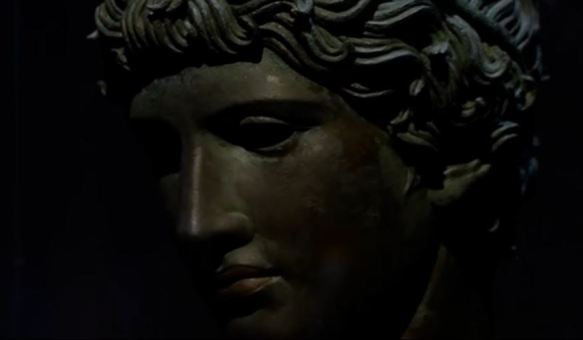Giacobbe Giusti, ‘Pergamon and the Hellenistic Kingdoms of the Ancient World’

Crayton Sohan of the Metropolitan Museum of Art, left, and Wolfgang Massmann, head stone conservator from the Antikensammlung, Berlin, position the head of an immense 10-foot-tall marble statue of Athena. Photo: The Metropolitan Museum of Art, NY
Giacobbe Giusti, ‘Pergamon and the Hellenistic Kingdoms of the Ancient World’

A fragment of the colossal sculpture “Head of a Youth” is among the ancient art works on display at the Met’s exhibition of Hellenistic art.Credit Photograph courtesy the Met Museum
Giacobbe Giusti, ‘Pergamon and the Hellenistic Kingdoms of the Ancient World’

The Borghese Krater. Greek, Late Hellenistic period, 40-30 B.C. Marble RMN-Grand Palais/Art Resource, NY
Giacobbe Giusti, ‘Pergamon and the Hellenistic Kingdoms of the Ancient World’

Statue of a Roman General (The Tivoli General). Roman, Late period, ca. 80-60 B.C. Marble Soprintendenza Speciale per i Beni Archeologici di Roma
Mass Invasion of Greek Art Comes to the New York Met
The rare treasures of the Pergamon Museum in Berlin will be on display
By
The Pergamon Museum in Berlin houses one of the world’s leading collection of antiquities. But World War II badly damaged the building—bullet holes from large-caliber machine guns still pockmark it—and it’s finally in the early stages of a much-needed renovation. “The building was absolutely rotten,” said Dr. Andreas Scholl, the director of the Staatliche, the museum and research group that oversees the Pergamon. “The fire brigade kept threatening to close the entire place.” Most of the museum will stay closed, with the collection off limits to the public, until 2019.
For New York’s Metropolitan Museum of Art, the rotting of the Pergamon gave it a rare opportunity to get its hands on the some of the most prized objects of the Hellenistic period. Next week, the Met will open one of the most ambitious exhibitions of Greek art in the museum’s history, “Pergamon and the Hellenistic Kingdoms of the Ancient World.” At the heart of the show are 73 pieces on loan from the Pergamon. “We lent very, very liberally,” said Dr. Scholl.
Experts say “Pergamon” is the first major-museum show to focus on the art of the Hellenistic period, which dates from the death of Alexander the Great in 323 B.C. to the suicide of Cleopatra in 30 B.C. The exhibition, which opens Monday and closes July 17, will not travel outside of New York.
Pergamon, in modern day Turkey, was one of the wealthiest cities of the ancient world, coming into its own as Athens was in decline and before the rise of Rome. “It is one of the top-five hit-parade ancient cities,” said Mr. Picón.
For the past six years, Mr. Picón and his staff have made dozens of trips to nearly 50 museums in 12 countries, pulling together loans for the blockbuster show.
One of the most dramatic pieces they were able to borrow is an Athena statue that weighs over three tons. It was shipped in three sections from the Pergamon in Berlin and carefully reassembled in the Met galleries.
The Hellenistic period is a challenging time for art historians. It is not marked by a single school of artistic development, and artists worked in many styles with many materials. So instead of having a thematic show, the Met focused on what the museum trade calls “an objects show.”
The galleries are filled with exquisite ancient glass, opulent jewelry, engraved cameos, mosaics, lifelike bronze sculptures and dramatic marble statues. Many have never traveled to the U.S. before. “I can’t claim that every single object is the best of its type, because I would be boasting,” said Mr. Picón, but “this is the top 1% of what has survived in terms of quality.”

Mr. Picón—who speaks five languages and has a reading knowledge of ancient Greek and Latin—did his undergraduate work at Haverford and Bryn Mawr colleges and got his Ph.D. from Oxford University. He grew up in San Juan, Puerto Rico, and when he announced his plan to become an art historian, specializing in Greek art, his businessman father, speaking on behalf of parents around the world, was taken aback by the impracticality of the profession. Mr. Picón recalls that his father then added, “You could at least have done pre-Columbian art.”
Touring the Met galleries last week as the Met installers put the finishing touches on the show, Mr. Picón was in a state of high excitement. Pausing before a marble Alexander in the first room of the exhibition, he declared it “the most beautiful Alexander, at the height of his youth.” A nearby small bronze of Hercules was “the best.”
In a nearby gallery he paused before “a spectacular” piece of ancient glass. “You would walk a mile to see something like this,” Mr. Picón said. Even the damaged pieces were perfect. Admiring a marble head that was split in half, he said, “If you had to break it, you couldn’t break it better!” Stopping before a glass plate borrowed from the British Museum, the curator exclaimed, “It’s a glass of staggering quality—one of the best pieces in the world.”
He delights in the tiny details, pointing out an Eros admiring himself in the mirror on a tiny plaster cast.
Mr. Picón is mischievous as well. One prone statue is displayed so that its shapely backside greets the approaching viewer. “You get a nice surprise when you walk around,” he said. The piece turns out to be a hermaphrodite. One of the workers installing the statue, he said, “went white” after discovering the statue’s dual nature.
Write to Eben Shapiro at eben.shapiro@wsj.com
http://www.wsj.com/articles/mass-invasion-of-greek-art-comes-to-the-new-york-met-1460568224

























